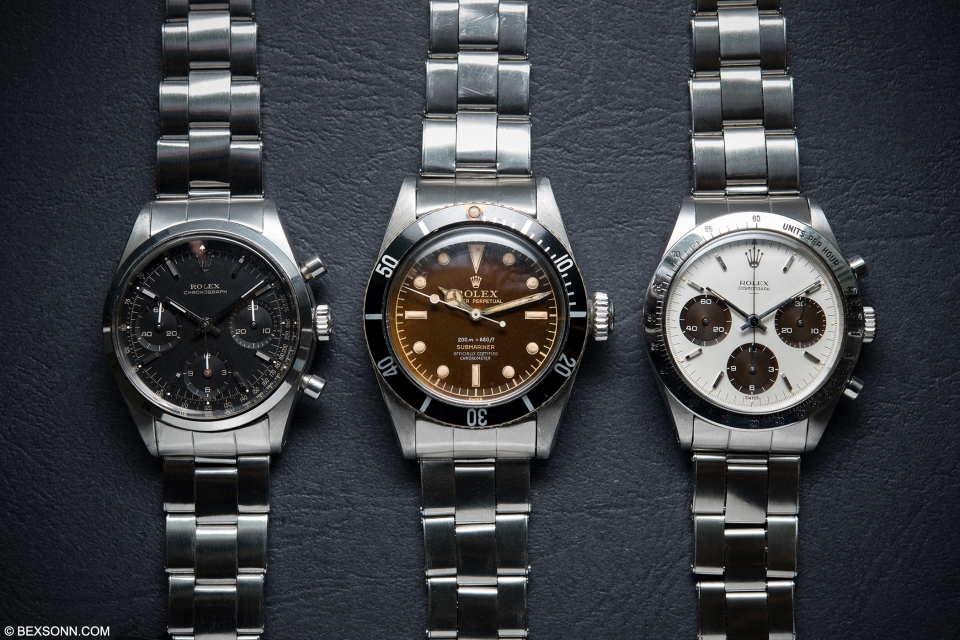We’ve already highlight three very special timepieces from the upcoming Phillips GWA4 and you can read Sean’s thoughts on those pieces right here. It of course goes without saying that there’s also some outstanding timepieces up for auction outside of those three 1518s. As per usual we thought it would only be right to get up close with some of the rarest and truly exquisite timepieces that will be auctioned over the weekend of the 12th & 13th November. We decided to pick out some of the pieces that may not be as prominent as the aforementioned 1518s but are without doubt timepieces that should be taken note of for very good reasons.
LOT 34: OMEGA SPEEDMASTER ALASKA II
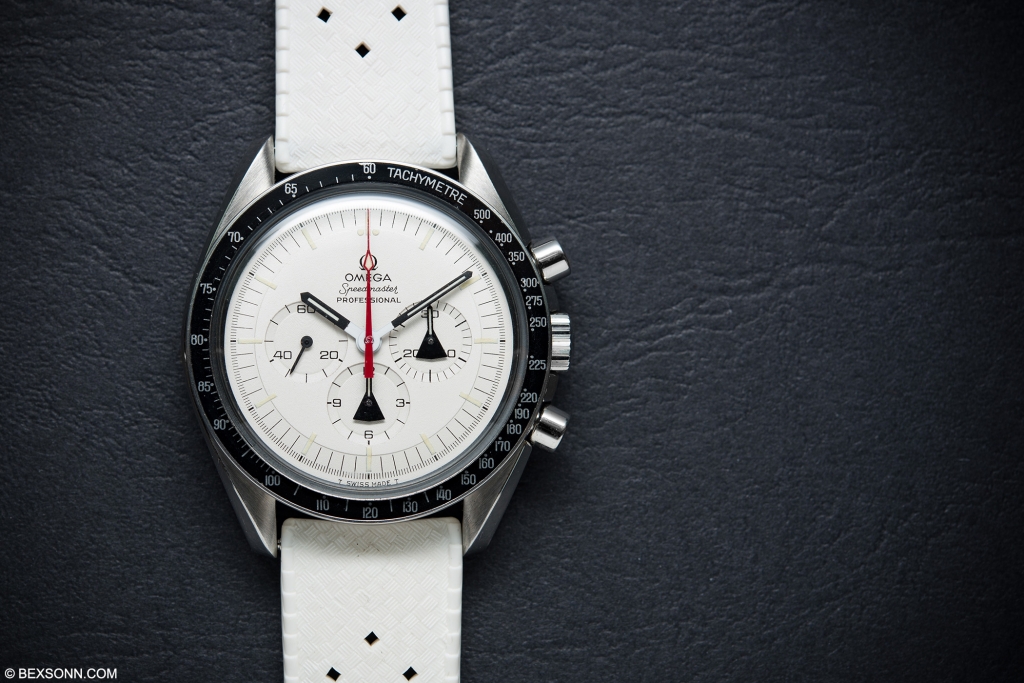 As you may know, we love Speedmasters here. Now, there are Speedmasters and there are Speedmasters, this, my dear readers, is the latter. Speedmasters have seen a healthy increase in value in recent years and now more than ever they have become hot property but this of course all depends on their condition and rarity. What you are looking at here is a super rare, Alaska II but what makes this piece so rare?
As you may know, we love Speedmasters here. Now, there are Speedmasters and there are Speedmasters, this, my dear readers, is the latter. Speedmasters have seen a healthy increase in value in recent years and now more than ever they have become hot property but this of course all depends on their condition and rarity. What you are looking at here is a super rare, Alaska II but what makes this piece so rare?
The Alaska series of projects, was a codename given by Omega to be able to covertly work on a project to create the perfect space watch. Speaking to the head of the Omega Museum, Petros and the man in charge at NASA whose job it was to source the first Moonwatches, Jim Ragan, last week; it was interesting to learn this Project name was nothing to do with the cold temperatures of the northern American state but indeed a project name chosen to throw anybody off the scent of what was being developed. In fact, it was even more interesting to learn that NASA had no idea what this project was called but that’s a story we shall save for another time.
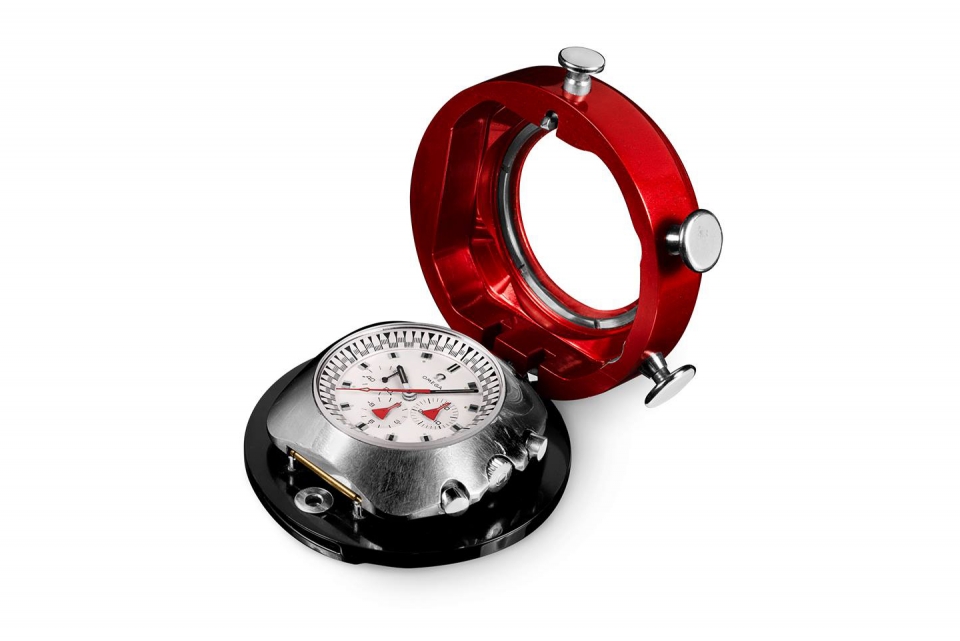 Omega first started working on the Alaska projects back in 1968 and the first prototype was called the “Alaska” or “Alaska I”, which you can see in the image above that bears no resemblance to the Moonwatch. It had a titanium case and the movement was also crafted with many titanium parts. This was not a common metal to work with in watchmaking back then and very costly. Due to the cost of this high-tech project watch and the cancellation of certain Apollo missions back then, NASA had no immediate use for these test watches, so the project was temporarily terminated. However, Omega was not abandoning its mission and in the fall of 1970, it continued to work on its covert project that had now been codenamed “Alaska II”. They had produced several prototypes for presentation to NASA. The Alaska II ‘test-watches’ had the more typical Moonwatch stainless steel case of the Speedmaster and was accompanied by a red protective case and fitted with a white dial. They were originally delivered to Houston at the beginning of 1970’s. However, by the end of 1972, the Alaska II project had come to an end as NASA, again, did not approve and these watches were not retained for the project. This example, one of three remaining prototypes known, was formally part of the Omega museum’s collection, but in 2007 it was auctioned during the Omegamania Auction.
Omega first started working on the Alaska projects back in 1968 and the first prototype was called the “Alaska” or “Alaska I”, which you can see in the image above that bears no resemblance to the Moonwatch. It had a titanium case and the movement was also crafted with many titanium parts. This was not a common metal to work with in watchmaking back then and very costly. Due to the cost of this high-tech project watch and the cancellation of certain Apollo missions back then, NASA had no immediate use for these test watches, so the project was temporarily terminated. However, Omega was not abandoning its mission and in the fall of 1970, it continued to work on its covert project that had now been codenamed “Alaska II”. They had produced several prototypes for presentation to NASA. The Alaska II ‘test-watches’ had the more typical Moonwatch stainless steel case of the Speedmaster and was accompanied by a red protective case and fitted with a white dial. They were originally delivered to Houston at the beginning of 1970’s. However, by the end of 1972, the Alaska II project had come to an end as NASA, again, did not approve and these watches were not retained for the project. This example, one of three remaining prototypes known, was formally part of the Omega museum’s collection, but in 2007 it was auctioned during the Omegamania Auction.
Just to finish the Alaska history, the Alaska III was finally approved by NASA and came with a satin finish star watch case and a radial dial. 56 were ordered and delivered. The Alaska IV and V were the quartz lcd and diapason (tuning fork) projects respectively, both did not pass testing. Overall, the Alaska projects were successful because so much was learned along the way. Had they not been trying to impress NASA, Omega may have never invested so much in advancing technologies. The testing and technologies developed gave way for many breakthroughs applied on future Omega models in their regular production.
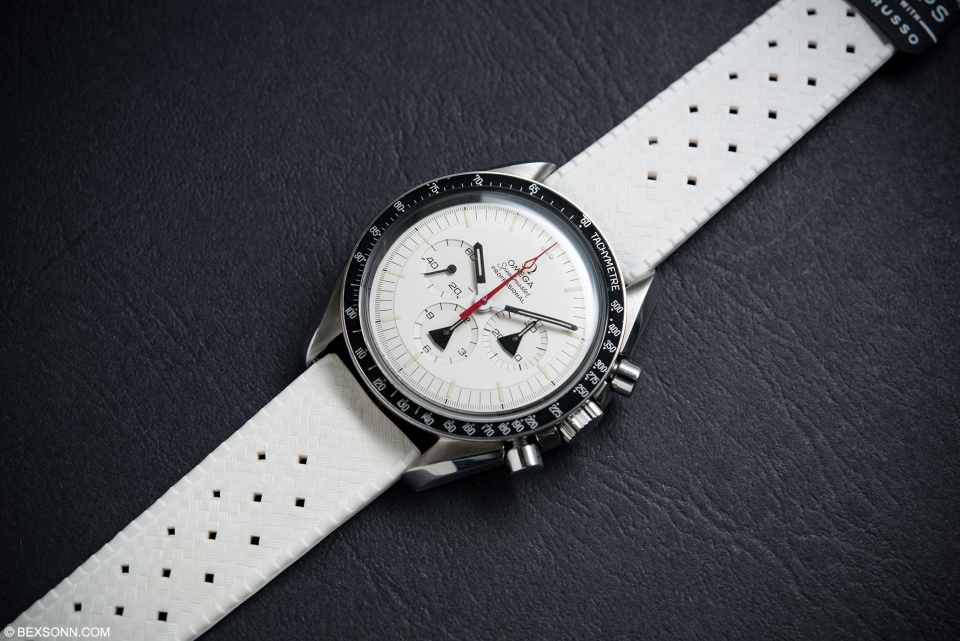 Like most 145.022-69 Speedmasters dating back to this period, it features a lyra lug style, asymmetric case, which of course incorporates crown guards and a black ‘tachymetre’ bezel. Inside beats the ever reliable, hand-wound, 861 cam lever calibre movement. Being an Alaska timepiece, it also comes accompanied with its original large red anodised aluminium case, which serves as a protective heat shield. Without doubt, what distinguishes these from the normal run-of-the-mill Speedmasters is the matte white dial (additionally coated with zinc oxide) made to reflect light, rather than absorb it. And if that wasn’t enough, in addition to its case being in absolute pristine condition, this piece also features an extremely rare bezel made in error that displays ‘220’ in the tachy scale. As mentioned, this is only one of three known examples of the ‘Alaska II’ project watches with original red protective case that is on the market. One is at the Omega museum on display and the other in a private Japanese collection, rumoured to have been donated to a museum as well. The likelihood of seeing another one on the market is pretty much zero. If you ask me, this Speedmaster is rarer than any Rolex exotic dial Daytona that graces this catalogue, so I’d be extremely surprised if it doesn’t break through its higher estimate.
Like most 145.022-69 Speedmasters dating back to this period, it features a lyra lug style, asymmetric case, which of course incorporates crown guards and a black ‘tachymetre’ bezel. Inside beats the ever reliable, hand-wound, 861 cam lever calibre movement. Being an Alaska timepiece, it also comes accompanied with its original large red anodised aluminium case, which serves as a protective heat shield. Without doubt, what distinguishes these from the normal run-of-the-mill Speedmasters is the matte white dial (additionally coated with zinc oxide) made to reflect light, rather than absorb it. And if that wasn’t enough, in addition to its case being in absolute pristine condition, this piece also features an extremely rare bezel made in error that displays ‘220’ in the tachy scale. As mentioned, this is only one of three known examples of the ‘Alaska II’ project watches with original red protective case that is on the market. One is at the Omega museum on display and the other in a private Japanese collection, rumoured to have been donated to a museum as well. The likelihood of seeing another one on the market is pretty much zero. If you ask me, this Speedmaster is rarer than any Rolex exotic dial Daytona that graces this catalogue, so I’d be extremely surprised if it doesn’t break through its higher estimate.
Estimate: CHF 100,000 – 200,000
LOT 36: ROLEX DAYTONA 6239 ‘UNDERLINE DOUBLE SWISS’
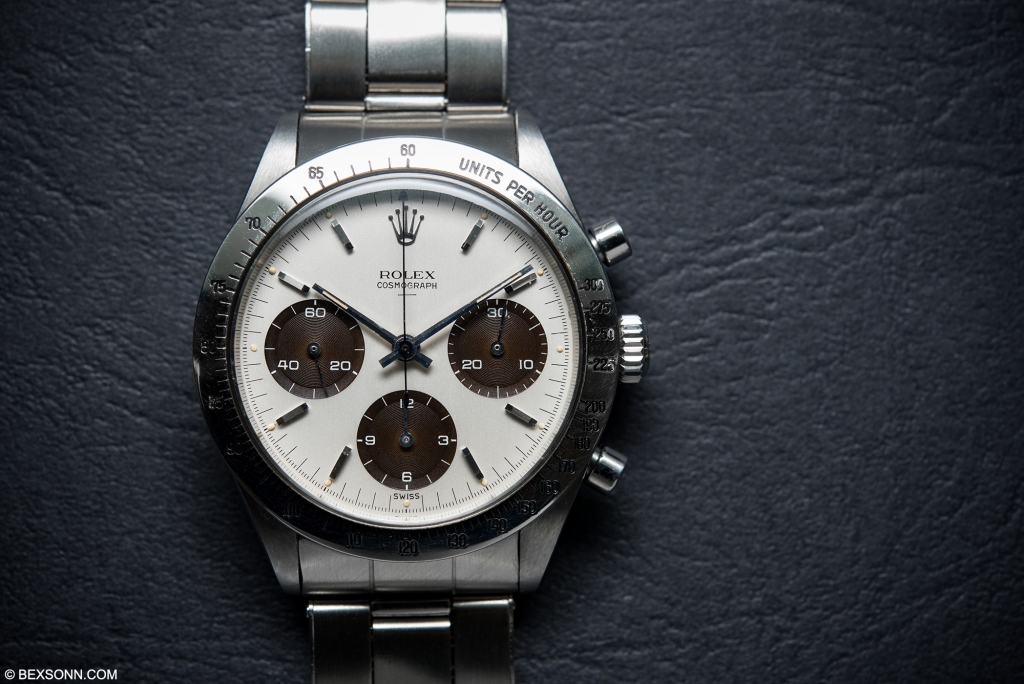 The reference 6239 is the first Daytona ever produced by Rolex, even though the watch had yet to be formally named as such. Introduced in 1963, for a very short period, the iconic chronograph timepiece for the first time featured an external tachymetre scale on its bezel. In addition, this example features a rare and sought-after, early bezel calibrated to 300 units but what is also important to note is that these bezels are marked at 275 and are hashed the entire way around, whereas later Daytonas include the use of dots. Moreover, this lot not only features a case that is in exceptional condition but also a dial that makes it even more covetable by Daytona collectors.
The reference 6239 is the first Daytona ever produced by Rolex, even though the watch had yet to be formally named as such. Introduced in 1963, for a very short period, the iconic chronograph timepiece for the first time featured an external tachymetre scale on its bezel. In addition, this example features a rare and sought-after, early bezel calibrated to 300 units but what is also important to note is that these bezels are marked at 275 and are hashed the entire way around, whereas later Daytonas include the use of dots. Moreover, this lot not only features a case that is in exceptional condition but also a dial that makes it even more covetable by Daytona collectors.
It sports a ‘double Swiss’ dial, something only seen on very early 6239s and what’s more, the dial is also marked with a short line just below the wording ‘Rolex Cosmograph’, hence the nickname underline but just why is this minute detail so important? The underline signifies the moment Rolex went from using the highly radioactive and extremely harmful radium material to the newer and safer tritium material, while Rolex have never confirmed this, collectors and connoisseurs alike have made an educated guess as to what this indicated. What you must also remember is that Daytona is omitted from the dial because the Daytona was given its name in 1964.
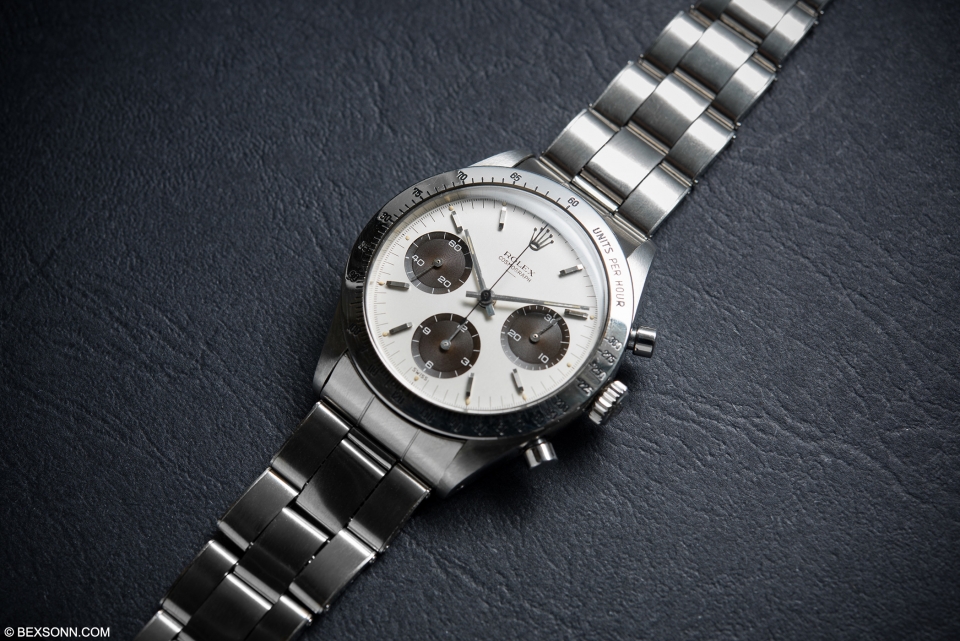 That said, another trait that most will notice is the fact that this 6239 also sports all the original hands and while this may sound like a minor detail, it is indeed a detail that only collectors will fully appreciate. Furthermore, this early reference 6239 also features a seldom seen tropical subsidiary dials. These sub dials have aged in such an uniformed way, from their standard black form to a warm chocolate tone that offers a lovely contrast to the matte white dial which has also aged. Yes, I said matte white because only this generation of Daytona featured this trait and this examples dial has nicely aged to a warm cream hue. The importance of this ref. 6239 Daytona, coupled with its beautifully aged dial and well-preserved case makes it a lot that should be taken note of – personally these early underline “double Swiss” 6239s in this original condition are in my opinion much rarer than its exotic dial sibling.
That said, another trait that most will notice is the fact that this 6239 also sports all the original hands and while this may sound like a minor detail, it is indeed a detail that only collectors will fully appreciate. Furthermore, this early reference 6239 also features a seldom seen tropical subsidiary dials. These sub dials have aged in such an uniformed way, from their standard black form to a warm chocolate tone that offers a lovely contrast to the matte white dial which has also aged. Yes, I said matte white because only this generation of Daytona featured this trait and this examples dial has nicely aged to a warm cream hue. The importance of this ref. 6239 Daytona, coupled with its beautifully aged dial and well-preserved case makes it a lot that should be taken note of – personally these early underline “double Swiss” 6239s in this original condition are in my opinion much rarer than its exotic dial sibling.
Estimate: CHF 100,000 – 200,000
LOT 37: ROLEX SUBMARINER REF. 6538 “TROPICAL FOUR LINER”
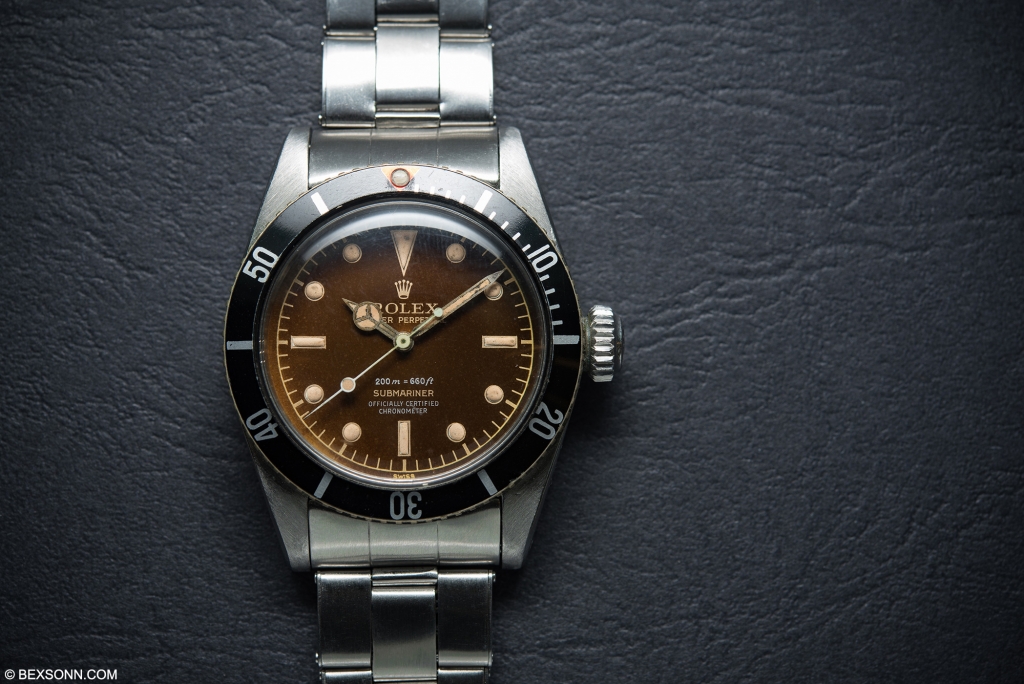 To collectors there is nothing more satisfying than a Rolex Submariner but of course there is a sub collection within the Submariner range. A Submariner always proves to be an interesting talking point amongst collectors but of course there is always an element of one-upmanship. That said, this example is perhaps one that collectors alike dream of. There are many superlatives to describe this current lot, such as magnificent, stunning and unique. This ref. 6538 from 1959, not only has a ‘Big Crown’, period correct bezel and immaculate case but the tropic nature of the dial is a sight to behold. These traits put together have an alluring effect on any kind of watch enthusiast. The tropical aging nature of the dial can only be likened to a piece of art, with minute but very significant details that make it, perhaps one of the most substantial known 6538 in the collecting community.
To collectors there is nothing more satisfying than a Rolex Submariner but of course there is a sub collection within the Submariner range. A Submariner always proves to be an interesting talking point amongst collectors but of course there is always an element of one-upmanship. That said, this example is perhaps one that collectors alike dream of. There are many superlatives to describe this current lot, such as magnificent, stunning and unique. This ref. 6538 from 1959, not only has a ‘Big Crown’, period correct bezel and immaculate case but the tropic nature of the dial is a sight to behold. These traits put together have an alluring effect on any kind of watch enthusiast. The tropical aging nature of the dial can only be likened to a piece of art, with minute but very significant details that make it, perhaps one of the most substantial known 6538 in the collecting community.
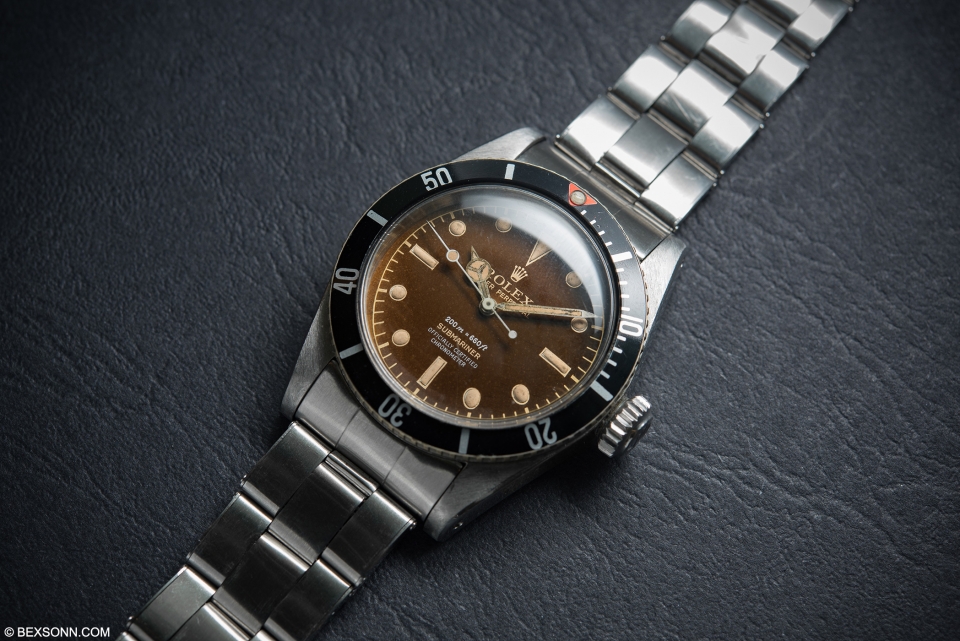 As already mentioned, the black lacquered dial has aged to perfection, like that of a fine wine or cheese, to a uniform chocolate brown hue, accented by the cream aged indices and hands. If that wasn’t enough, the dial proudly displays four lines of text that furthermore whets any connoisseur’s appetite. Most early 6538s only display the depth rating and model name, this examples however, displays two more, denoting its chronometer certification but while this text and depth rating are written in silver, the rest of the dials text, coronet, markers and model name are in gilt. The fact this particular Submariner holds the record for highest price ever realised at auction for a Submariner, only further enhances its significance.
As already mentioned, the black lacquered dial has aged to perfection, like that of a fine wine or cheese, to a uniform chocolate brown hue, accented by the cream aged indices and hands. If that wasn’t enough, the dial proudly displays four lines of text that furthermore whets any connoisseur’s appetite. Most early 6538s only display the depth rating and model name, this examples however, displays two more, denoting its chronometer certification but while this text and depth rating are written in silver, the rest of the dials text, coronet, markers and model name are in gilt. The fact this particular Submariner holds the record for highest price ever realised at auction for a Submariner, only further enhances its significance.
Estimate: CHF 300,000 – 600,000
LOT 52: ROLEX REF. 6238 “PRE-DAYTONA”
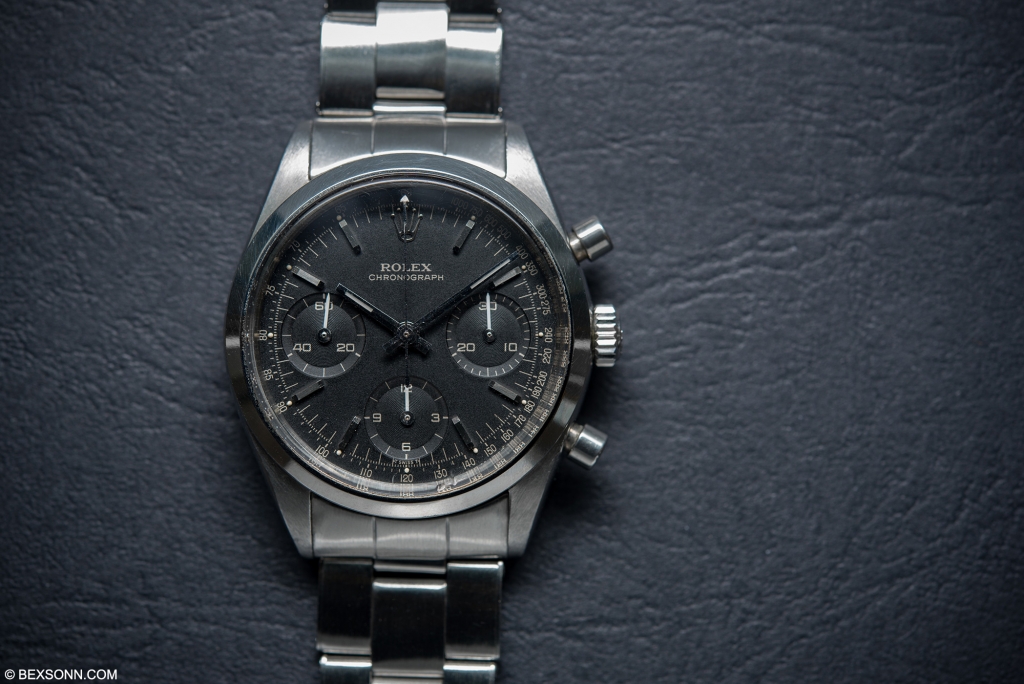 The Rolex ref. 6238 is referred to many collectors as a Pre-Daytona and to be honest, it’s not hard to see why. The ref. 6238 is the direct predecessor to the venerable Cosmograph Daytona, which was in fact the last model to feature a tachymetre scale on the dial and it is quite understandable to consider that without this important reference there would perhaps be no Daytona today. When you look at earlier Rolex chronographs that came before this reference, they were quite obviously more classically styled, however, looking at the 6238 it has a more modern and timeless design. What perhaps stands out on this example, is the fact that it is fitted with the more sought after and rarer matte black dial. Most interestingly about this 6238 is its condition and the fact it comes with its original Rolex guarantee, making it an absolute find. Something that has always intrigued me about these pre-Daytonas, is how relatively affordable they are in comparison to the Daytona and what’s more they arguably offer the same kind of sportiness too.
The Rolex ref. 6238 is referred to many collectors as a Pre-Daytona and to be honest, it’s not hard to see why. The ref. 6238 is the direct predecessor to the venerable Cosmograph Daytona, which was in fact the last model to feature a tachymetre scale on the dial and it is quite understandable to consider that without this important reference there would perhaps be no Daytona today. When you look at earlier Rolex chronographs that came before this reference, they were quite obviously more classically styled, however, looking at the 6238 it has a more modern and timeless design. What perhaps stands out on this example, is the fact that it is fitted with the more sought after and rarer matte black dial. Most interestingly about this 6238 is its condition and the fact it comes with its original Rolex guarantee, making it an absolute find. Something that has always intrigued me about these pre-Daytonas, is how relatively affordable they are in comparison to the Daytona and what’s more they arguably offer the same kind of sportiness too.
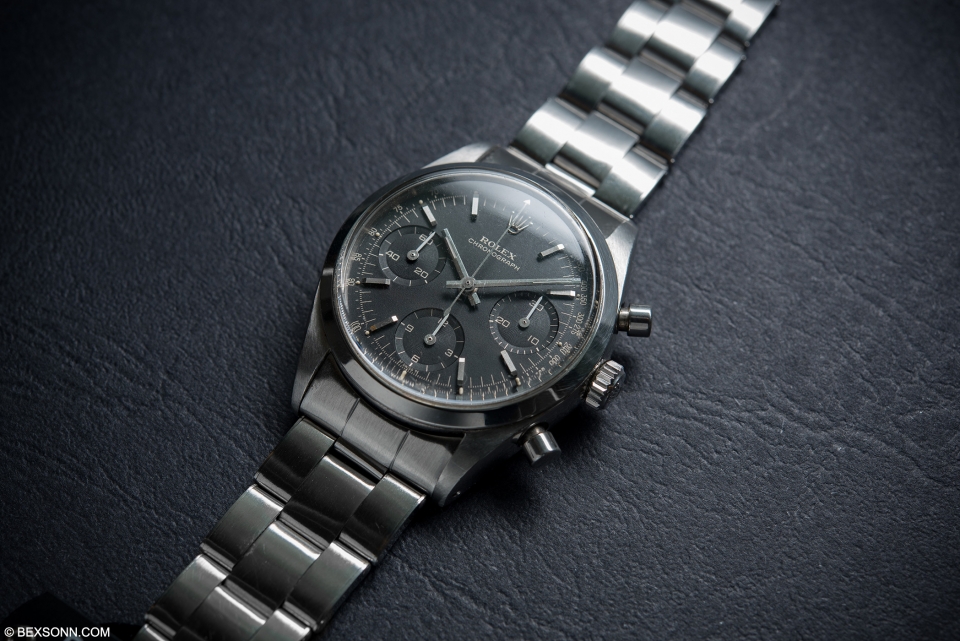 Estimate: CHF 80,000 – 100,000
Estimate: CHF 80,000 – 100,000
For more lot information on The Phillips Geneva Watch Auction: Four that will take place on the weekend of the 12th & 13th of November at La Reserve Hotel, Geneva, visit the official Phillips Watches website to view the entire catalogue
